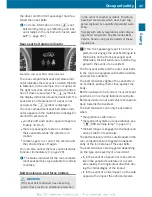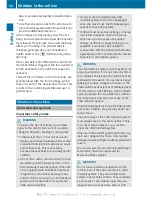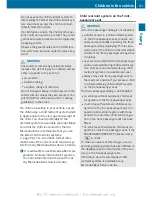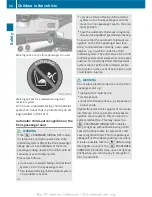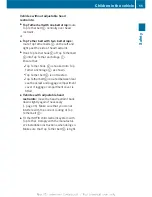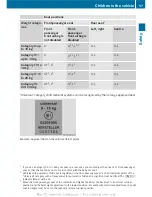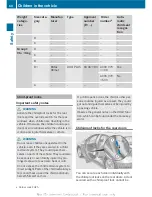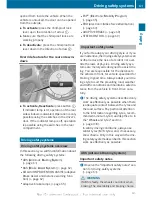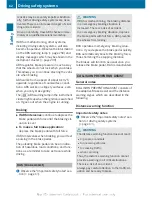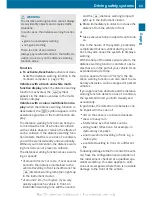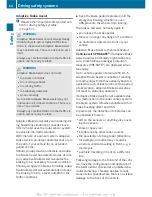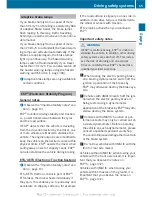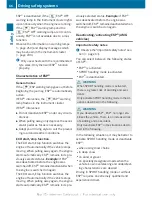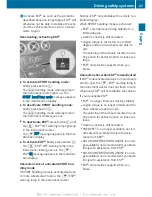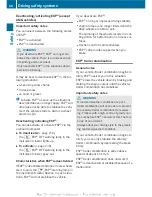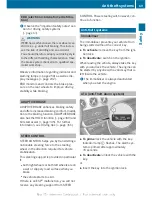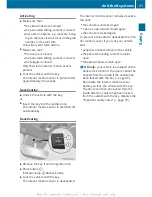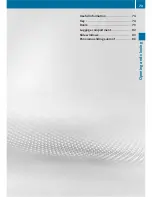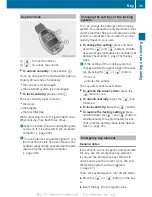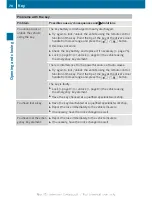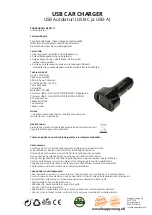
G
WARNING
The distance warning function cannot always
clearly identify objects and complex traffic
situations.
In such cases, the distance warning function
may:
R
give an unnecessary warning
R
not give a warning
There is a risk of an accident.
Always pay careful attention to the traffic sit-
uation; do not rely on the distance warning
function alone.
Function
X
To activate/deactivate: activate or deac-
tivate the distance warning function in the
on-board computer (
Y
page 218).
Vehicles with a black and white multi-
function display: when the distance warning
function is activated, the
Ä
symbol
appears in the status overview in the multi-
function display.
Vehicles with a colour multifunction dis-
play: when the distance warning function is
deactivated, the
æ
symbol appears in the
assistance graphics in the multifunction dis-
play.
The distance warning function can help you
to minimise the risk of a front-end collision
with a vehicle ahead or reduce the effects of
such a collision. If the distance warning func-
tion detects that there is a risk of a collision,
you will be warned visually and acoustically.
Without your intervention, the distance warn-
ing function cannot prevent a collision.
The distance warning function issues a warn-
ing at speeds:
R
of around 30 km/h or more, if, over several
seconds, the distance maintained to the
vehicle travelling in front is insufficient. The
·
distance warning lamp then lights up
in the instrument cluster.
R
of around 7 km/h or higher, if you very
quickly approach a vehicle in front. An
intermittent warning tone will then sound,
and the
·
distance warning lamp will
light up in the instrument cluster.
X
Brake immediately in order to increase the
distance from the vehicle in front.
or
X
Take evasive action provided it is safe to do
so.
Due to the nature of the system, particularly
complicated but non-critical driving condi-
tions may also cause the system to display a
warning.
With the help of the radar sensor system, the
distance warning function can detect obsta-
cles that are in the path of your vehicle for an
extended period of time.
Up to a speed of around 70 km/h, the dis-
tance warning function can also react to sta-
tionary obstacles, such as stopped or parked
vehicles.
If you approach an obstacle and the distance
warning function detects a risk of a collision,
the system will alert you both visually and
acoustically.
In particular, the detection of obstacles can
be impaired in the case of:
R
dirt on the sensors or obscured sensors
R
snow or heavy rain
R
interference by other radar sources
R
strong radar reflections, for example, in
multi-storey car parks
R
a narrow vehicle travelling in front, e.g. a
motorcycle
R
a vehicle travelling in front on a different
line
Following damage to the front end of the vehi-
cle, have the configuration and operation of
the radar sensor checked at a qualified spe-
cialist workshop. This also applies to colli-
sions at slow speeds where there is no visible
damage to the front of the vehicle.
Driving safety systems
63
Safety
Z
Summary of Contents for 2012 A-Class
Page 1: ...A Class Owner s Manual Nur für internen Gebrauch For internal use only ...
Page 4: ......
Page 28: ...26 ...
Page 40: ...38 ...
Page 74: ...72 ...
Page 92: ...90 ...
Page 284: ...282 ...
Page 285: ...Useful information 284 Engine compartment 284 Service 289 Care 290 283 Maintenance and care ...
Page 336: ...334 ...
Page 353: ...351 ...
Page 354: ...352 ...

